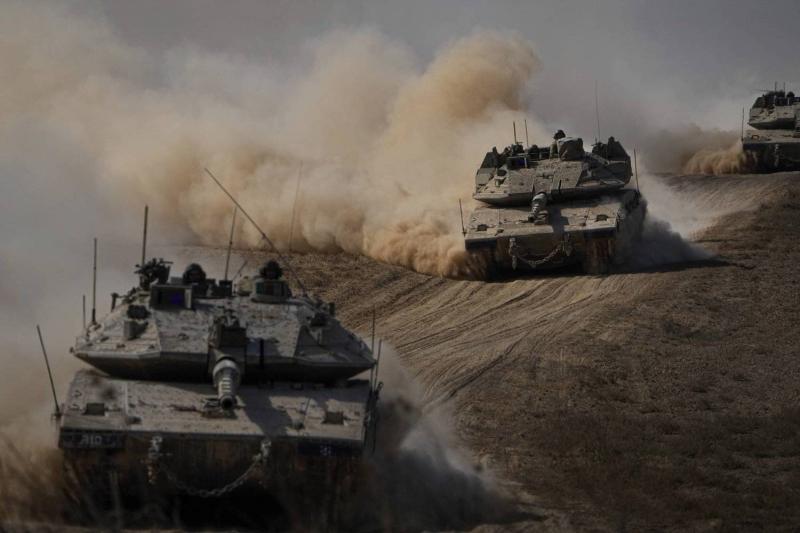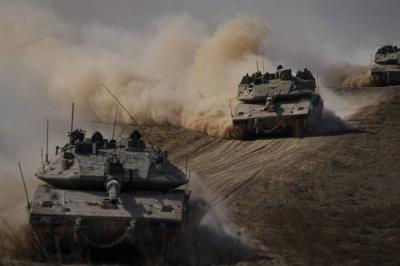What occurred in the Shuja'iyya neighborhood between the Israeli army and Hamas raised questions about the specific tactics employed by both sides in urban warfare. Hamas operatives lured Israeli soldiers to a house pre-equipped with explosives, and when another team of soldiers arrived, they fell into a similar ambush. In such ambushes, the Izz ad-Din al-Qassam Brigades typically use explosive devices (IEDs), which are homemade bombs containing military and non-military components. These devices are usually employed by irregular military forces and are highly effective against conventional military power. They can be used in roadside ambushes to obstruct attacking forces or their supply lines, placed in entrances or buildings to target groups of soldiers, or even attached to vehicles and tanks to destroy them. They can also be dropped from drones; in fact, resistance groups have utilized them across almost all of these scenarios.
The device consists of five components arranged differently in various versions of IEDs: a power source, a triggering switch, a detonator, an explosive main charge, and a casing that often contains a mix of projectile elements like balls or nails, generating lethal shrapnel upon detonation. The explosive charge itself can be sourced from any military component, including artillery, mortar shells, aerial bombs, or certain types of local fertilizers mixed with explosive substances like TNT, making them flexible and easy for resistance groups to manufacture. There are countless methods of building them, and they can be adapted for any purpose depending on the mission, allowing them to breach armor, demolish buildings, and target soldiers if they are in unarmored units.
Additionally, IEDs show a high degree of variation in their detonation methods. They can either be primitive, activated by a pressure switch resembling a landmine, or they may have a very complex detonation mechanism that operates via radio frequency signals timed and triggered by an individual monitoring the target. Alternatively, one person might directly attach them to an armored vehicle or tank, as is the case with Palestinian resistance.
Moreover, a new type of explosive device has recently been added to Hamas's arsenal: the explosively formed penetrator (EFP), a more sophisticated and complex bomb that represents a significant advancement in this field. These devices typically have a concave metal cover made from steel or copper. This concavity physically concentrates the explosive energy in a precise direction, creating a stream of molten metal that can penetrate armor at speeds reaching thousands of meters per second, assisting in breaching the strongest armor in the world today. For example, during the coalition invasion of Iraq, these devices penetrated heavily armored vehicles and Abrams tanks, which are the main battle tanks of the U.S. Army.
In fact, the concept of the armor-piercing explosive device was invented in Germany in 1910, but it took a full century until the coalition invasion of Iraq in 2003, where the use of IEDs generally, especially armor-piercing ones, came as a serious surprise to those forces. According to some researchers in this field, it represented "the most effective weapon against conventional forces" in Iraq, leading to IEDs becoming a crucial part of modern warfare.
Importantly, this effectiveness resulted in the establishment of a military system centered around IEDs, transforming their use from random operations into almost military-grade organization, consisting of an operations manager, a planning team, and an implementation team specialized in explosive devices. Manuals were even published on successfully executing roadside ambushes using IEDs, how to manufacture explosives from high-explosive traditional explosives and military munitions, and how to completely eliminate attacking convoys.
This led to a variety of uses for those devices based on function. IEDs designated for individuals were designed and operated differently than those for buildings, or those targeting armored vehicles, airplanes, or creating obstacles for advancing troops, which could be used initially before deploying other IEDs on the road to destroy all the forces.
**Hamas Strategy**
In the 2014 conflict, Hamas smartly deployed thousands of fighters in relatively small, well-armed offensive teams. According to Israeli sources, the resistance fighters were more effective and aggressive than in previous conflicts, surprising Israeli forces and coordinating their fire to inflict casualties even on the best infantry and armored formations. During this time, they managed to draw Israelis into several previously prepared ambushes, although the damage was minimal then.
However, with the apparent development in the resistance's capabilities, especially following the operational and intelligence success in the "Al-Aqsa Flood" operation on October 7, and the introduction of new weapons to Palestinian factions, such as Yassin missiles and newer explosive devices (without mentioning drones, new rockets, and the Rajum system among other weapons), this implies that the resistance is now entirely different, with a plan to inflict as many losses as possible on the Israeli army being executed adeptly.




